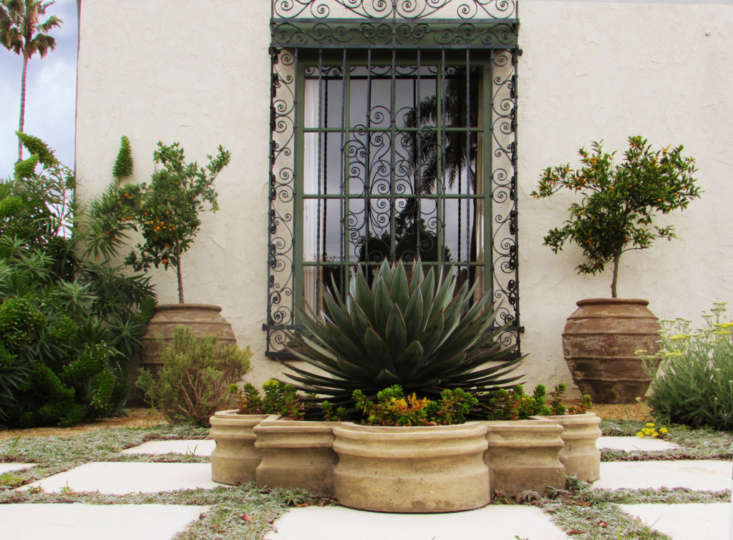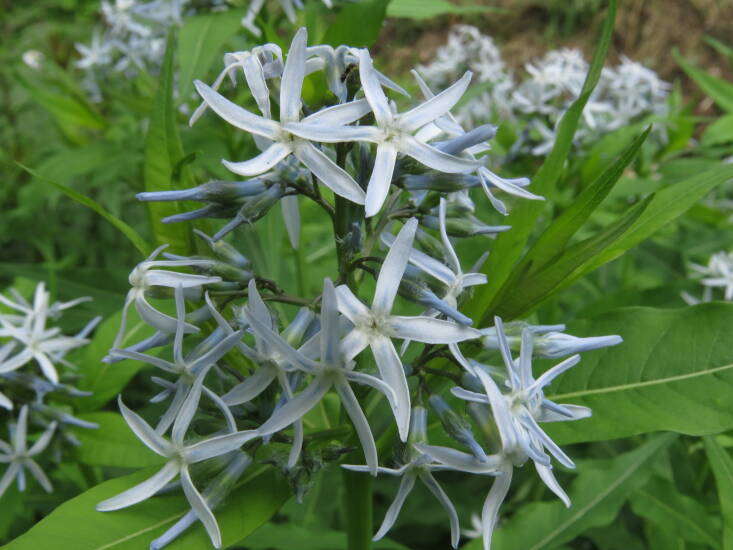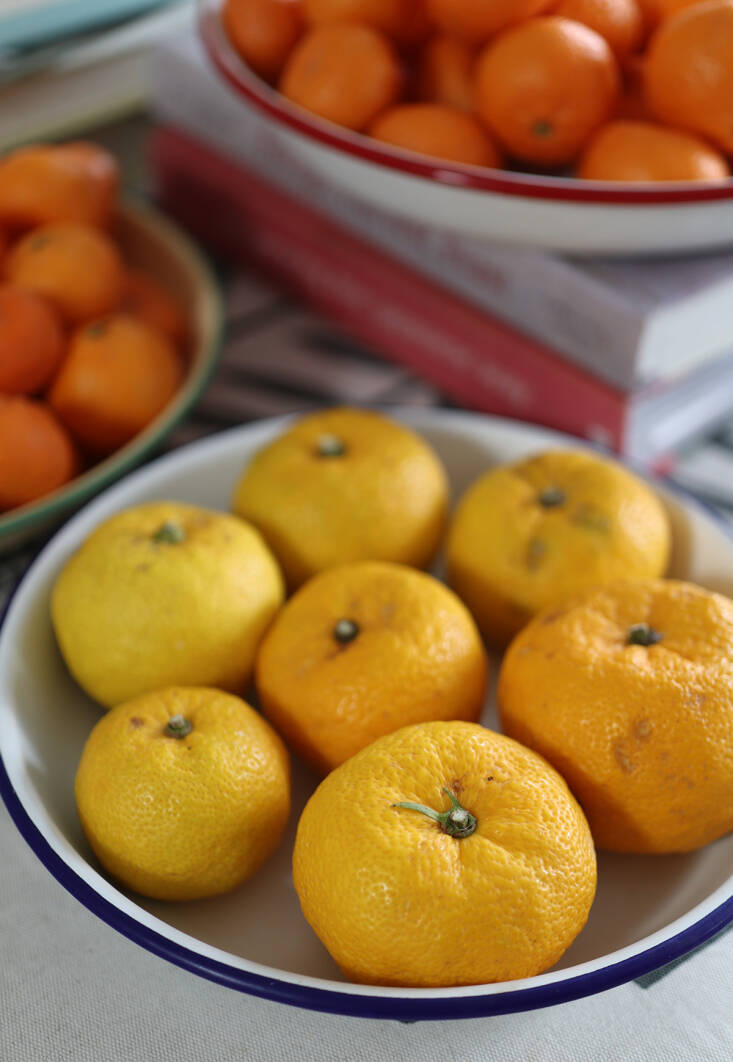I have a Meyer lemon tree and a lime tree on my property. Where I live, in Marin County, CA, it feels like everyone has a citrus tree of some sort—or at least knows someone with an over-productive citrus you can mooch off of. All of which is to say, I didn’t think I needed another citrus tree in my life. But that was before I met the kumquat tree.
The other day at my gardening client’s house, I passed by her kumquat tree, did a double-take on the dangling tiny oranges, and found myself scheming to bring one home for my own garden. I’d always thought I wouldn’t like the fruit. I guess I thought it would be too tart, too seedy, too something of what I had no interest in. But as soon as I popped one, then two into my mouth, I changed my mind. The next day I set out to the nursery to buy my own kumquat tree.
Please keep reading to learn if this is your next citrus tree, too:
Above: A potted kumquat tree can be top-dressed with mulch or gravel. Just remember that potted citrus, like most plants grown in a container, will require more frequent drinks of water than they would if planted directly in the ground. Photograph from Urban Oasis Landscape Design’s Vibrant Mediterranean Front Yard.
Kumquat trees are evergreens that produce small, oval or round fruits that are about one to two inches wide. Depending on the variety, the citrus will generally bloom in late spring and into summer, followed by fruit that ripens mid-winter, with fruit holding on well into spring. Native to southern Japan and China, kumquats were introduced to Europe by Robert Fortune, a collector from the London Horticultural Society. Soon, this tasty citrus traveled to North America and in 1915, their classification changed from Citrus japonica to Fortunella.
 Above: You can bring a cut branch or two indoors for a simple but stunning arrangement. Photograph by Laure Joliet for Remodelista, from All Eras Welcome: A Spanish Colonial Update in LA.
Above: You can bring a cut branch or two indoors for a simple but stunning arrangement. Photograph by Laure Joliet for Remodelista, from All Eras Welcome: A Spanish Colonial Update in LA.
What is especially lovely about the tree is that most of them bear a heavy crop even at a young age. And the vibrantly orange fruit has a sweet peel that is delicious in its own right. Inside, you will find slightly tart flesh and a few seeds. I eat the peel and the pulpy insides separately, but many people pop the whole thing in their mouth for a burst of beauty that is simultaneously sweet and tart.
Cheat Sheet
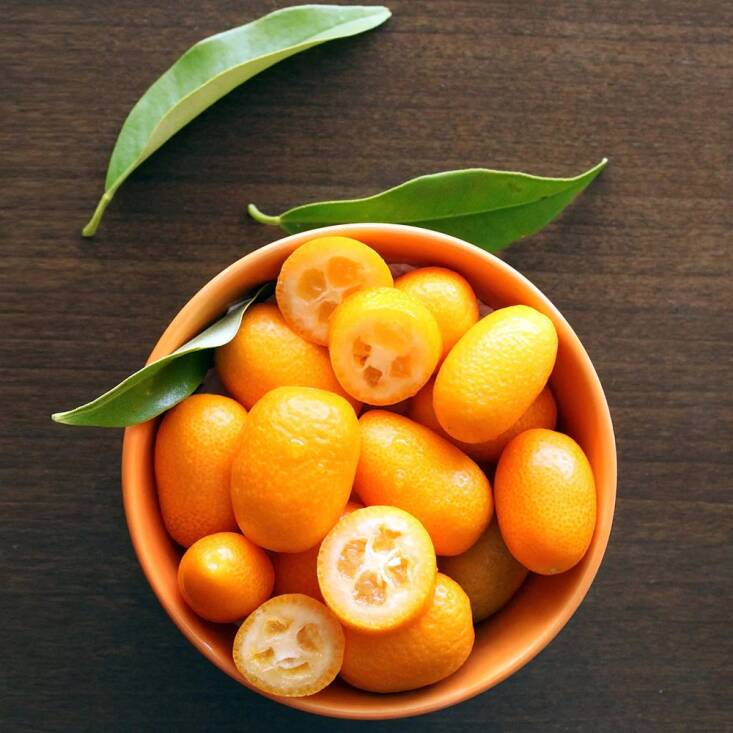 Above: A favorite: ‘Nagami’ is a medium-sized evergreen tree/shrub growing to about 8 feet tall and 6 feet wide, with a low canopy that produces fruit in mid-spring to late summer. Photograph via Fast Growing Trees.
Above: A favorite: ‘Nagami’ is a medium-sized evergreen tree/shrub growing to about 8 feet tall and 6 feet wide, with a low canopy that produces fruit in mid-spring to late summer. Photograph via Fast Growing Trees.
- Where cold temperatures persist, consider growing your kumquat indoors in a container. Just make sure to situate your container close to a warm east- or west-facing window.
- Even if you’re in a warm climate, you may want to consider growing it in a container; the sweet citrus fragrance coming from the white blossoms should be appreciated up close.
- Bees love, love, love the blossoms.
- Also great for adding to a vegetable garden among other edibles.
- High in vitamin C, this citrus can be eaten fresh or cooked for a jam or jelly. You might even try baking them in a chicken dish.
- While not severely toxic, the fruit’s sugars and acidity could cause digestive upset to pets if an excess is eaten.
Keep It Alive
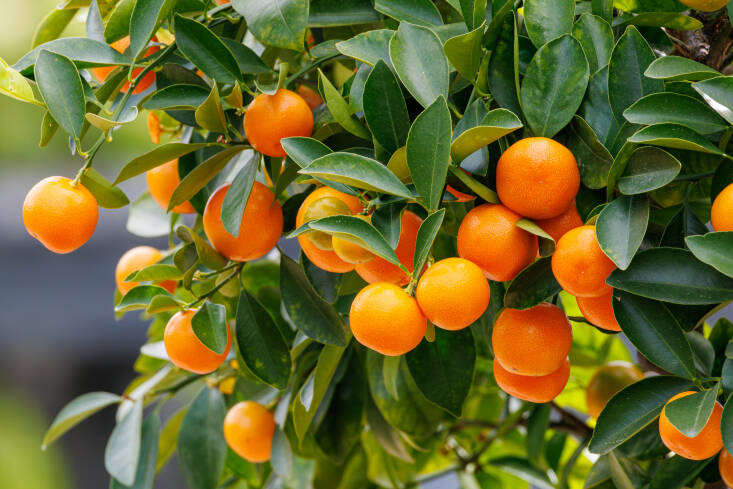 Above: The trees tend to bear abundant fruit. Photograph by Lesley B. via Flickr.
Above: The trees tend to bear abundant fruit. Photograph by Lesley B. via Flickr.
- Plant your kumquat in the spring to avoid any risk of damaging frost.
- Water regularly during the hottest months and feed often in the spring and summer. An organic fertilizer formulated for citrus is perfect.
- Select a sunny location with at least six to eight hours of direct sunlight a day for best fruit production.
- Prefers loamy soil that is slightly acidic (pH 5.5-6.5) and well-draining. If planting it in the ground, avoid heavy clay soil.
- If growing in a container, use the largest one you have, ensuring it has drainage holes to prevent root rot. Also, consider filling your container with soil formulated for palm/citrus trees.
- Prune to control the growth and shape. The plant should be bushy and have sturdy branches to support the fruit.
- Be on the alert when you have a grafted kumquat. Unwanted shoots can develop below the graft union on the root stock. Remove these immediately or they will take over the plant and your cute kumquat will barely grow.
- Kumquats are hardy to USDA Zone 8 and 9.
See also:

